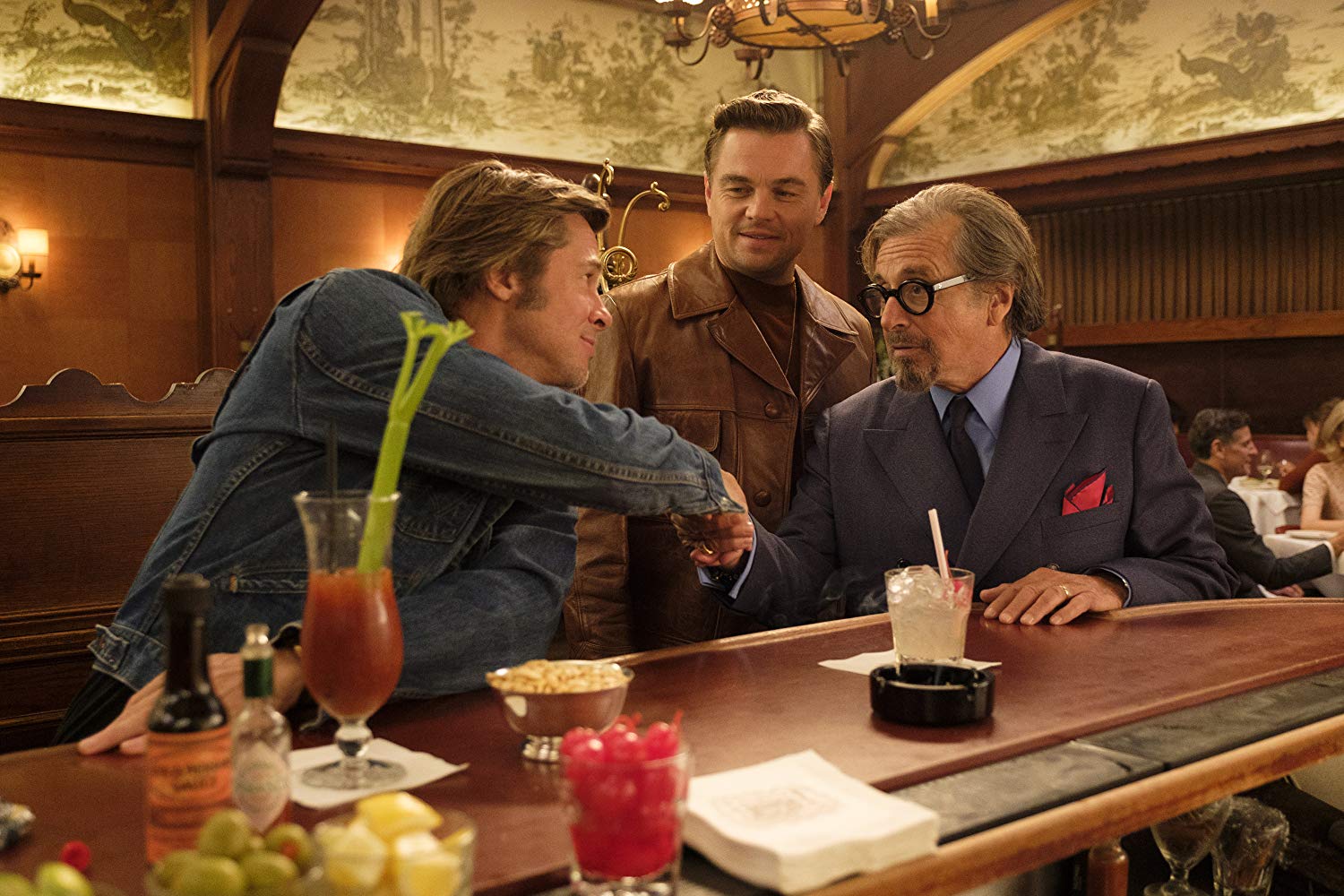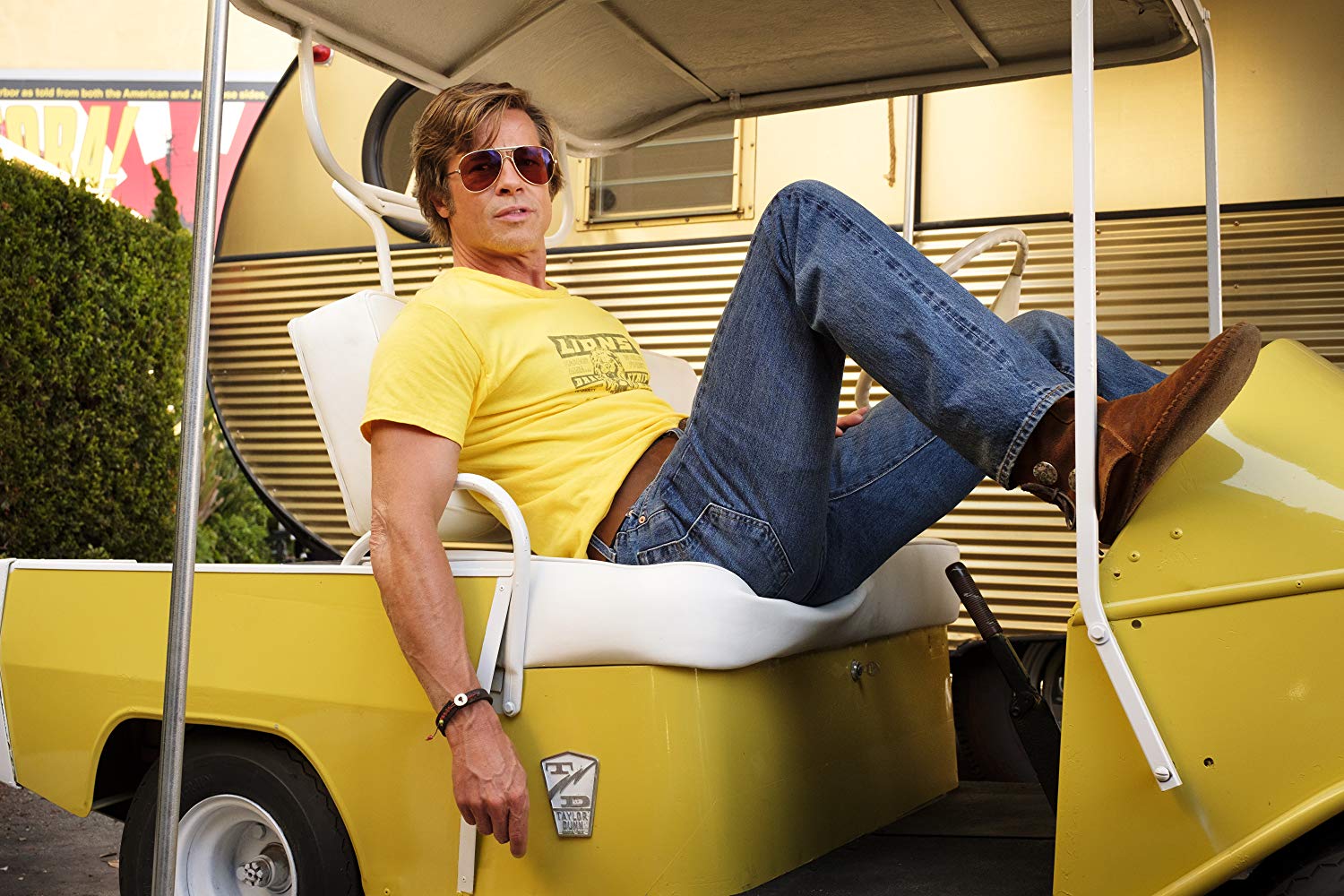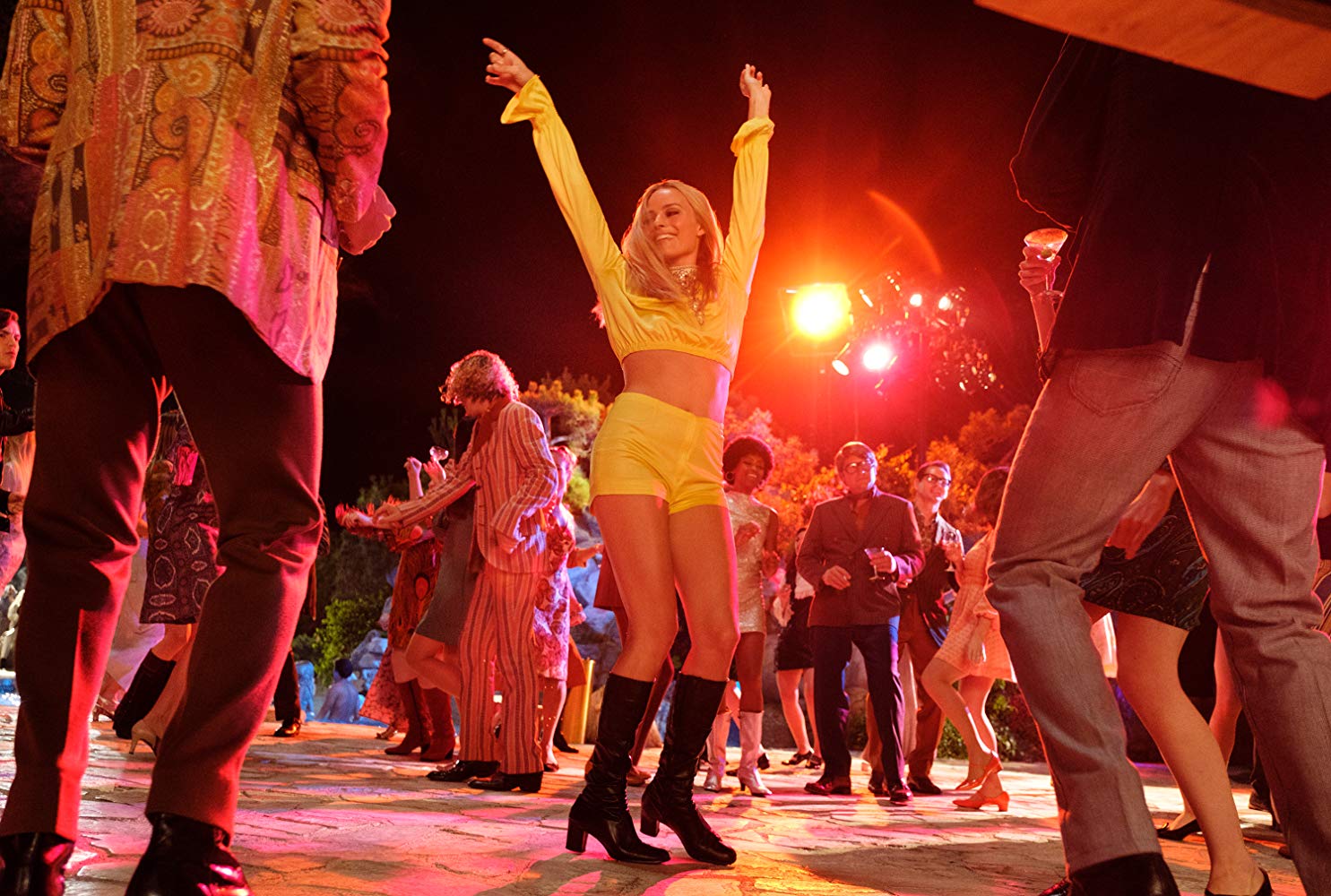The film is also not plot-driven. I know, Tarantino films have always been more about the characters than the plot and that’s one of the reasons why they’re so great in the first place. But as I watched Kill Bill, I knew that I was watching a revenge-fantasy. I figured that The Hateful Eight is a whodunit once everyone arrived at the cabin. Django Unchained is about a man on a mission to rescue his wife from a vicious slave owner. Inglourious Basterds (my absolute favourite of Tarantino’s) is about taking down Nazis — it too has a revenge element in it. But the trajectory isn’t as clear in Once Upon a Time in Hollywood. There isn’t a particular character or characters on a mission, or hungry for revenge or trying to solve something or planning a heist. They’re merely existing. Even the pacing feels a little weird. The tension doesn’t gradually escalate towards the climax, so much so that if it wasn’t for the sudden burst Tarantino’s signature blood, gore and violence, I wouldn’t have even guessed that I was in fact watching the final moments of OUATIH. I also didn’t root for or against anyone, because aside from the third act and one other sequence (which I’ll get to shortly), Tarantino doesn’t put the protagonists in sticky situations or give them specific goals. I don’t know if this is a Tarantino problem or simply my problem, but I do know that I’m dying to watch it again knowing exactly the kind of film that it is. Knowing that we’ll just be spending two days with a few different characters who reside and work in Hollywood and experience their lives while in the background and unbeknownst to these characters, an evil cult is growing in strength. (No, we don’t actually get to watch the rise of Charles Manson either. This isn’t an origin story of a psychopath.)
Here’s the interesting thing: Despite its mellowness and Tarantino’s restraint, despite not being a hair-raising affair, despite the lack of quotable lines that you wouldn’t dare say in front of your grandmother, Once Upon a Time in Hollywood still kind of rocks. A lot of it has to do with Tarantino’s supreme and unmatched ability to craft a world so rich in detail that it feels as immersive and sprawling as a George R.R. Martin novel (very early in the film we see two seemingly unrelated characters — Cliff Booth and a young hippie girl — lock eyes and wave at each other across the street. Little do they know, their world is about to collide in a much bigger way than they could’ve possibly imagined at the time.) The man who more than 20 years ago shook the fabric of cinema with Pulp Fiction, still continues to prove that he belongs on the Mount Rushmore of screenwriting. The world in OUATIH feels lived in and the characters that populate the screen, even the minor ones, feel like they have lives that extend beyond the first frame and the last. We follow three of them. Leonardo DiCaprio plays a TV-star by the name of Rick Dalton, who’s confident and at times braggadocious on the surface, but underneath lies an insecure guy who wallows in self-pity and gulps margaritas straight out of the blender. Cliff Booth (Brad Pitt) is Rick Dalton’s stunt double. He used to be a bigger deal but is now comfortable in his new role as Rick’s part-time driver and handyman, full time best friend. Cliff doesn’t mind as he gets to spend a lot of time in Rick’s mansion, freeloading of his booze. If you thought the super sexy Brad Pitt reached his peak sexiness in 1999’s Fight Club, think again. At one point, the 55-year-old Pitt stands on top of a roof, takes his shirt off and pops a cigarette in his mouth as if to say “take that, Jason Momoa!” Margot Robbie barely has any lines as Sharon Tate (this also isn’t a movie about Sharon Tate’s murder), but the casting of Robbie as the character was a stroke of genius. Robbie isn’t just drop-dead gorgeous, the aura surrounding her is absolutely infectious, so much so that her presence is felt even when she’s not on screen. None of these characters do or say things to push the plot forward (there isn’t a plot to be pushed, to begin with) which may rub a lot of people the wrong way. It definitely makes the film much, much slower than the rest of Tarantino’s endeavours, including The Hateful Eight. But it’s difficult to complain too much when the scenes we do get — scenes of characters just existing and being — are absolutely fascinating.
The film may not be about the rise and fall of a TV actor, but it’s still absolutely captivating to watch him practise his lines in his trailer, growing more and more frustrated with himself; To see him interact with an intelligent child method actor who hates the term “actress” and always remains in character on set even during her break. Tarantino shoots these scenes in a way that makes us flies on the wall of a movie set. He isn’t in a hurry to cut away or to get to the point, a rarity in mainstream films these days. And DiCaprio delivers a performance that reminded me exactly why I rolled my eyes when he won an Oscar not for The Wolf of Wall Street or Django Unchained, but for The Revenant. We probably didn’t need the scene at Cliff Booth’s place. Yet, I absolutely enjoyed watching Cliff Booth feed his dog in his tiny house. Outside of Rick’s life, Cliff is a mess. He’s the kind of guy who eats straight out of the pan because he hasn’t washed any of his plates in seven months. You don’t need 4DX to know that his place stinks. Why, you might ask, do we need to see Sharon Tate watching a movie in a theatre with her feet raised on the chair in front of her? One would assume that the feet shots are there to quench Tarantino’s foot fetish, but the sequence itself says a lot. Here we see an up and coming actress, who very well could’ve one day become a huge star, excited to catch herself on the big screen and absorb the reactions of the audience during her scenes. They react positively and she smiles, excited that she’s delivered a performance that’s resonant. There’s an innocence and purity about her. We can’t help but smile too, but our stomachs began to lurch. We know what’s about to happen to her… she doesn’t.
Although these “nothing scenes” do at times drag on a little too long, I couldn’t take my eyes off the screen, as if the film was coated with a paste made out of glue and crushed magnets. Then there’s the heart-pounding and hypnotic sequence that takes place on the Manson ranch. In a few moments of sheer brilliance, Tarantino who’s been singing soul (rather beautifully I might add), suddenly morphs into the rockstar that we fell in love with all those years ago. I’m not referring to foul language and blood either. I’m talking about his ability to craft an absolute nail-biter of a sequence through flashy and vibrant dialogue, camera movement and character movement. Once Upon a Time in Hollywood might just be Tarantino’s “worst” film to date. But does that label really matter when you’re being compared to Reservoir Dogs, Pulp Fiction, Jackie Brown, Kill Bill Vol 1 & 2, (Death Proof), Inglourious Basterds, Django Unchained and Hateful Eight? Tarantino’s ninth film may lack the intensity, fire and weirdness that can usually be found in his work, but it’s still a rich world packed with utterly fascinating characters. It’s a film that genuinely looks like it’s shot in the 60s in which it’s set. It’s a film that feels like an event. It’s a film that I can’t wait to revisit!


